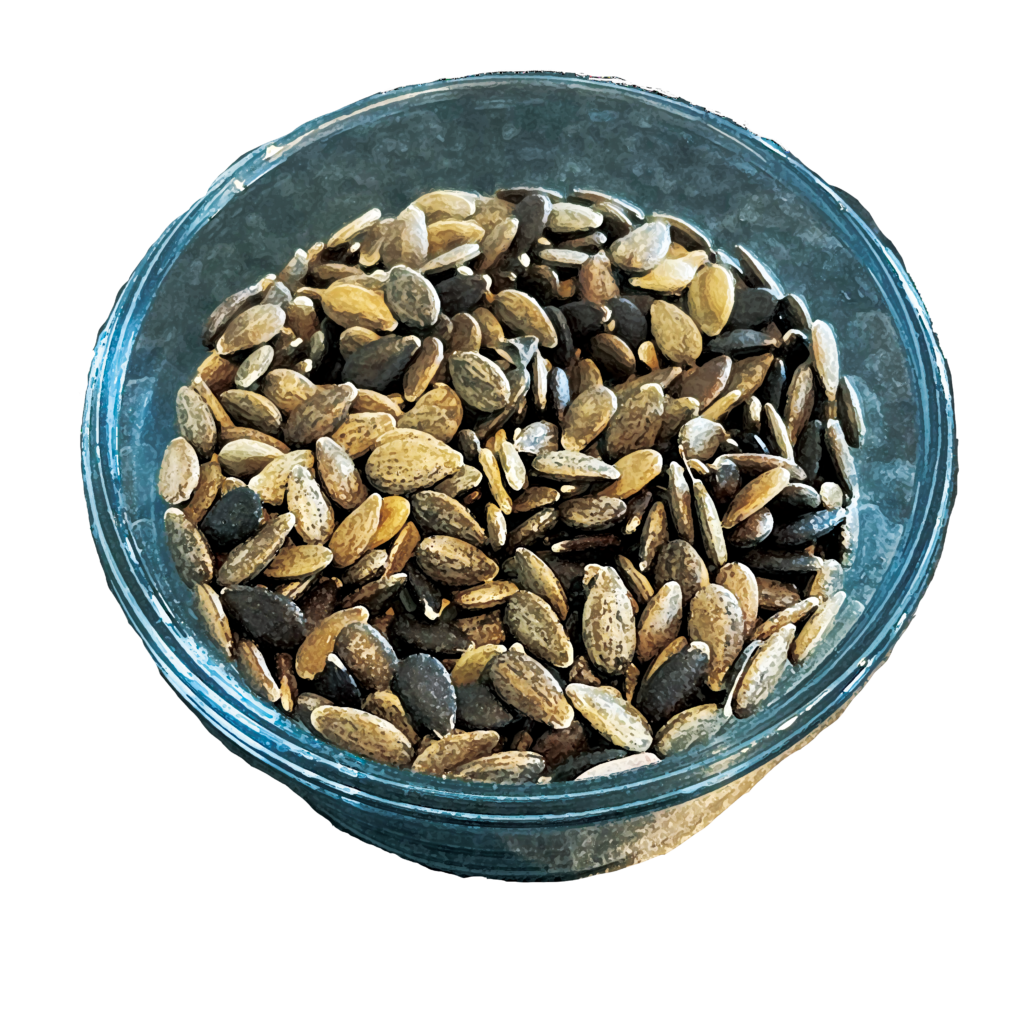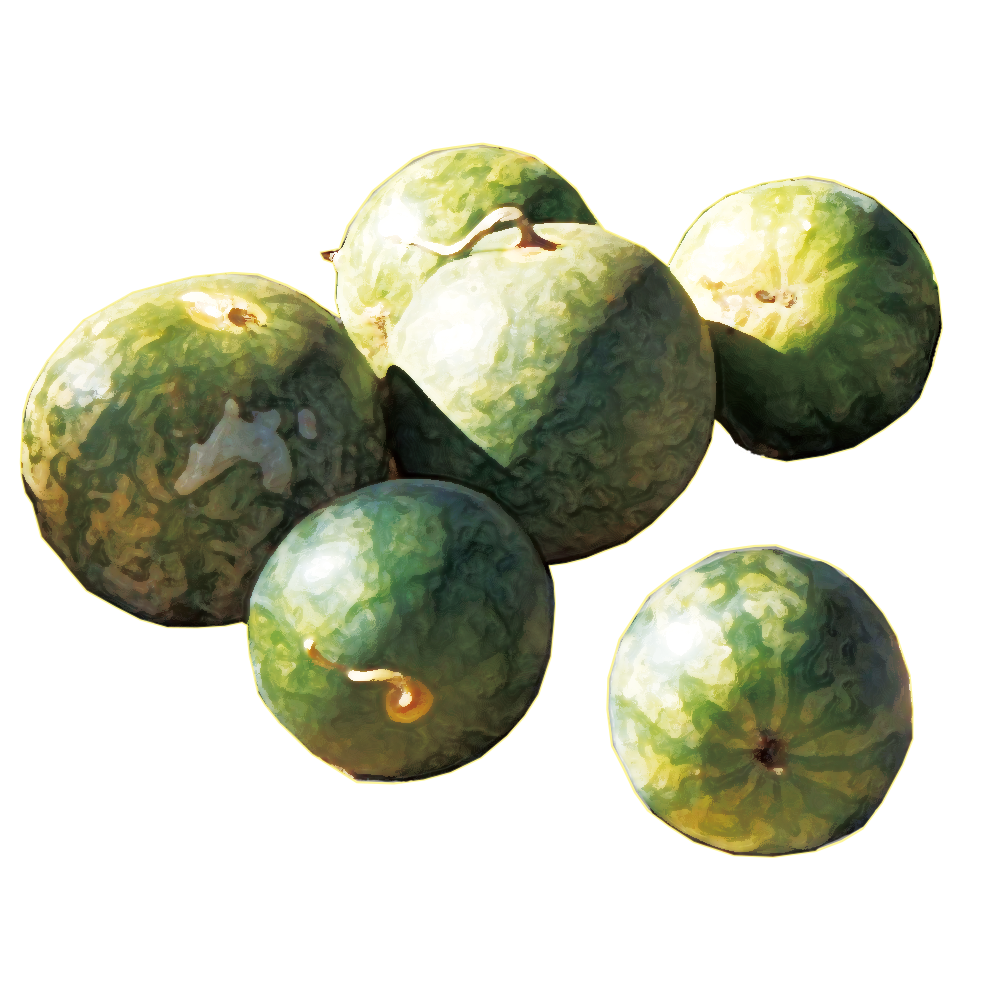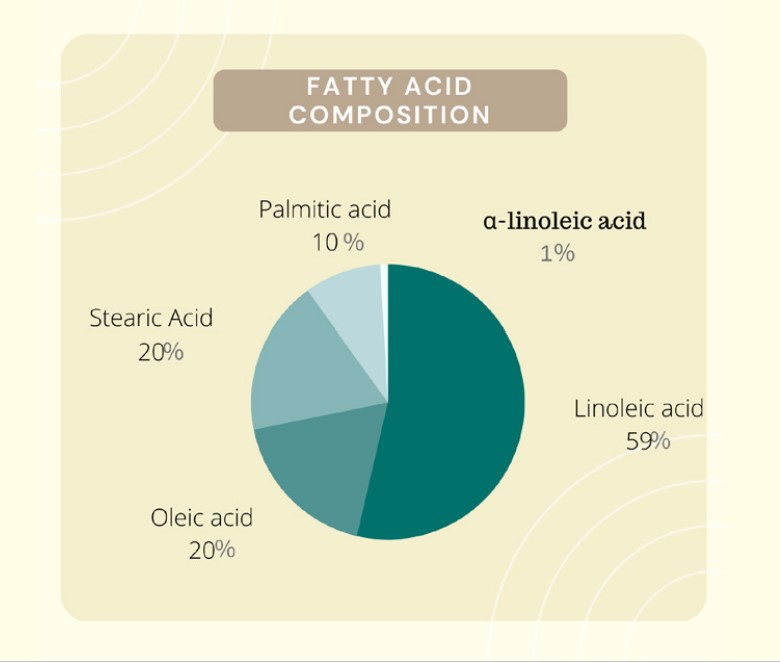
Oil from African desert melons, rich in
Linoleic acid, anti-oxidants, and tocopherols.
The Kalahari melon is an ancestor of the watermelon species. Itgrows wild in the Kalahari desert region of Sub-Sahara Africa. The San, a hunter-gatherer tribe in the region, traditionally used this seed oil to protect their skin during the desert travels. It is rich in nourishing omega-6 fatty acids, antioxidants, Vitamine E, Minerals, and Linoleic acids.

Product Profile
- INCI :
- CITRULLUS LANATUS SEED OIL
- Origin:
- South Africa
- Production method:
- Cold press
- Relative density:
- 0.906 - 0.930(g/ ㎤ )
- Iodine Value:
- 110-141
Characteristics & Benefits
Linoleic acid is present in the highest concentration at 59%, followed by oleic, palmitic, and stearic acid. Linoleic acid has anti-inflammatory properties and improves skin atrophy associated with aging. It unclogs pores and removes excess sebum from the surface of the skin. Kalahari melon seed oil contains a high level of γ-tocopherol (70.56mg/100g), followed byα-tocopherol (25.94 mg/100g), both of which are excellent sources of anti-oxidants.


Evidence data 1: Anti-inflammatory properties
This oil contains phytosterols and phenols, which soothes skin inflammation. β-sitosterol is the major sub-component of phytosterols with potent anti-inflammatory effects. High concentration of β-sitosterol at 485.49 mg/100 g contributes to reducing skin irritation and redness. Linoleic acid transforms into arachidonic acid and gamma-linolenic acid in the human body, and produces anti-inflammatory effects.
source:African seed oils of commercial importance ̶ Cosmetic applications I. Vermaak, G.P.P. Kamatou, B. Komane-Mofokeng, A.M. Viljoen,, K. Beckett Department of Pharmaceutical Sciences, Faculty of Science, Tshwane University of Technology, Private Bag X680, Pretoria 0001, South Africa PhytoTrade Africa, 5 Calvert Avenue, London, E2 7JP, United Kingdom

Evidence data 2: Antioxidant properties
Vitamin E contributes to preventing skin atrophy, which is associated with aging. The high concentrations of γ-tocopherol (70.56 mg/100 g) and α-tocopherol (25.94 mg/100 g) promotes anti-wrinkle and anti-aging as antioxidant rich sources. Linoleic acid, an omega-6 essential fatty acid, is present at a concentration of about 60%, preventing cell damage and protecting cell membranes, while its antioxidant properties protects the skin against aging.
source:African seed oils of commercial importance ̶ Cosmetic applications I. Vermaak, G.P.P. Kamatou, B. Komane-Mofokeng, A.M. Viljoen,, K. Beckett Department of Pharmaceutical Sciences, Faculty of Science, Tshwane University of Technology, Private Bag X680, Pretoria 0001, South Africa PhytoTrade Africa, 5 Calvert Avenue, London, E2 7JP, United Kingdom

Traceability ~ About the Producers

The manufacturer of this product organically grows raw material in their 10-hectare farm in rural northeastern South Africa. The 300 employees in their company enjoy working from their local villages where employment opportunities are scarce. The factory contributes to driving the local economy and preserves the wildernessʼ biodiversity by establishing its own research center and private wilderness reserve.
Examples of Product Application
■Cleansing oils
■Face oils
■Makeup bases, sunscreens
■Post-bath treatments
■Powders/eye shadows/cheeks